Salta - Argentina - 2007
In July-August 2007, a fortnight after Drew was born (and after we visited him in Perth), we visited South America for our third time.
(59-days - Melbourne - Auckland - Santiago - Buenos Aires (Argentina) - Iguassu Falls (Argentina and Brazil) - Buenos Aires - Salta -
Atacama Desert (Argentina and Chile) - Santiago - Quito (Ecuador) - Galapagos Islands - Quito - Bogata (Colombia) - Cartagena (Colombia)
- Bogata - Caracas (Venezuela) - Angel Falls (Venezuela) - Caracas - Santiago - Auckland - Melbourne)
After 5 nights in Buenos Aires we flew to Iguassu Falls and crossed into Brazil.
We stayed at the Hotel Tropical Das Cataratas where we met Ben and Crystal.
They had been travelling the world for a long time and they travelled here from northern Brazil.
We travelled with them back into Argentina, staying 2 nights at the Sheraton Hotel in the Iguassu Falls National Park.
After our great time at Iguassu we flew to Buenos Aires for a night.
After that we had a flight to Salta in northern Argentina.
Purmamarca
From Salta we drove 130km north to Purmamarca to see the beautiful colours in the mountains.
The Cerro de los Siete Colores (Hill of the Seven Colours) shows its colourful face to the nearby town.

This scenic sight is composed of 7 different colours, all of which derive from different types of rocks;
leading to its diverse range of colours.
Each colour/rock is also said to have formed during different time periods.
Firstly, pink is believed to be composed of red clay, mudstone (mud) and arilitas (sand).
Its estimated age goes back about 3 to 4 million years.
The shade of white surrounding the pink is mostly made up of limestone and is aged about 400 million years.
Continuing onto the mix of brown and purples, which are composed of lead, and rich in calcium carbonate,
and is 80 to 90 million years of age.
On top of the purple-brown colour, there is an earthy brown colour that has been detected in the rock.
The rocks making up this colour are the most recent colours appearing on the rocks, aging at 1 to 2 million years old,
and is described as "fanglomerate composed of rock with manganese belonging to Quaternary."
As for the red, which is composed of claystones (iron) and other clays belonging to the upper Tertiary,
it is said to also be aged around 3 to 4 million years.
The shades of green, aging at about 600 million years, are made up of phyllites, and slates of copper oxide.
Finally, the yellow mustard colour is made of sandstones with sulfur, and is estimated at 80 to 90 million years.

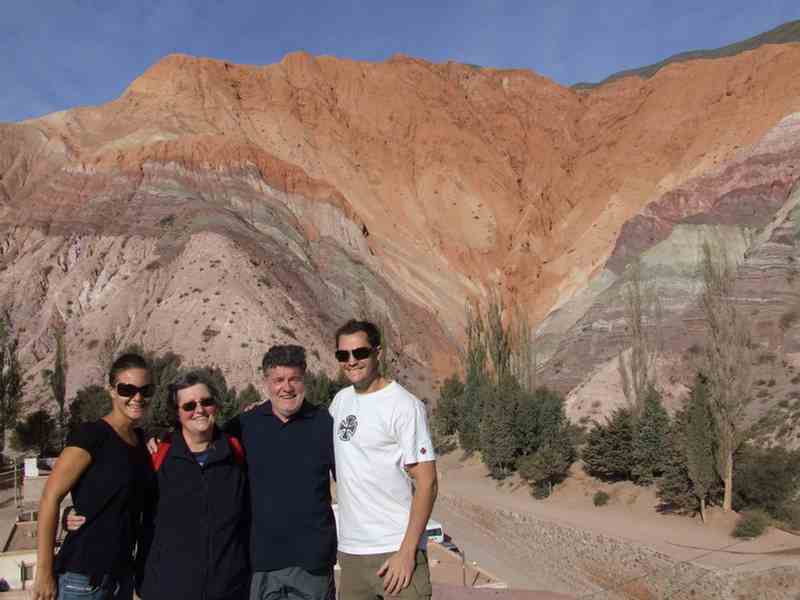
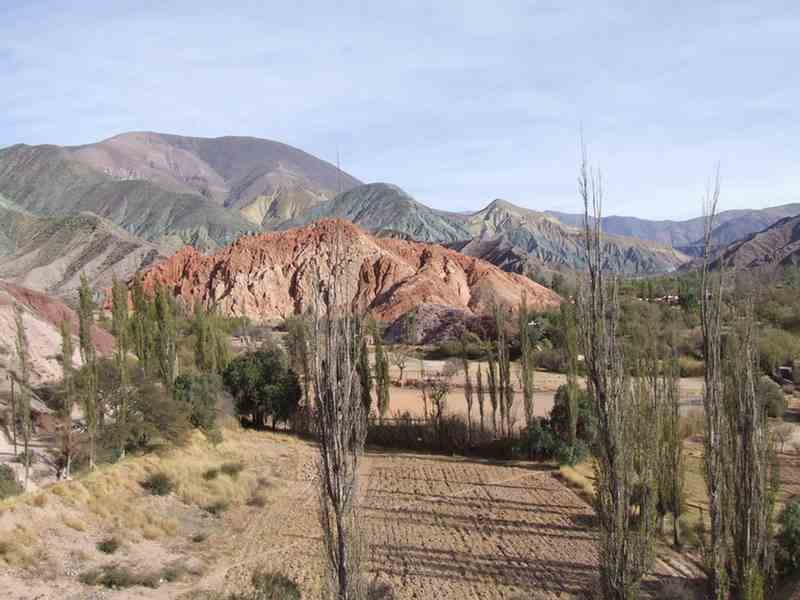
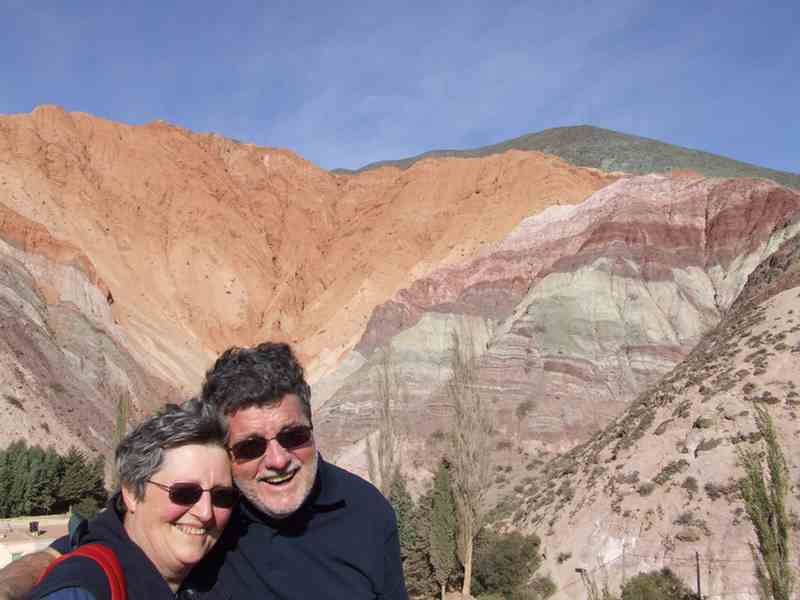
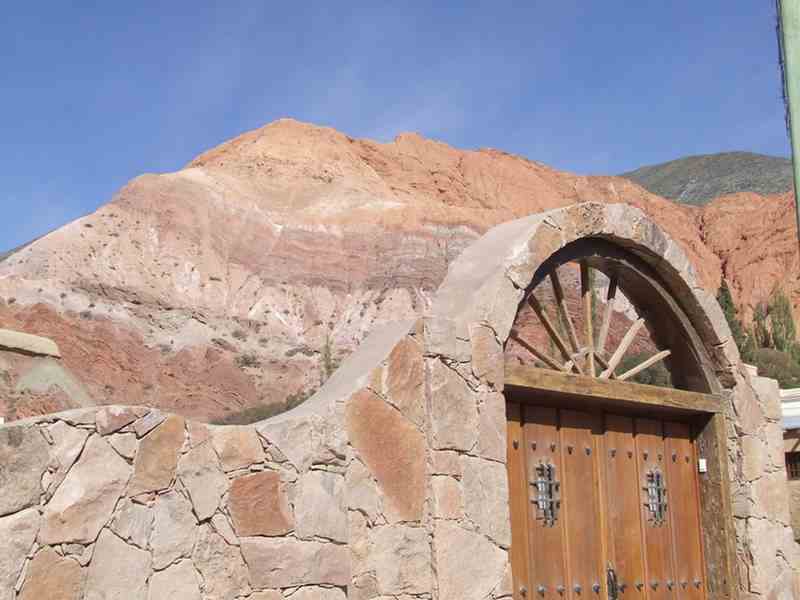
We drove further north from Purmamarca to Maimara to see the coloured layers of the mountains.


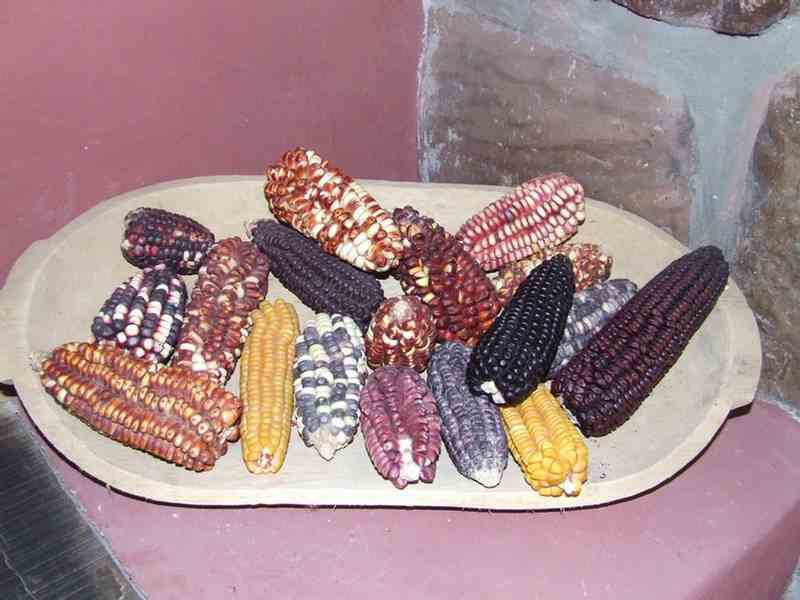

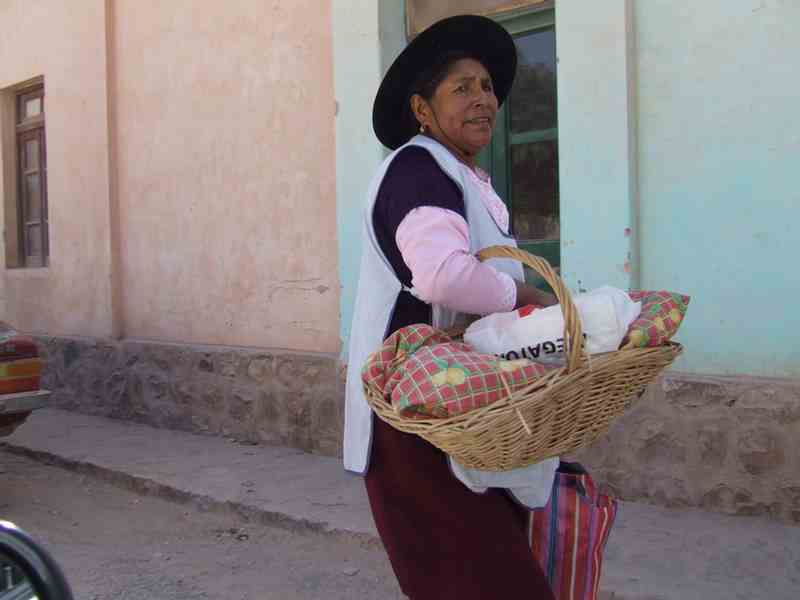

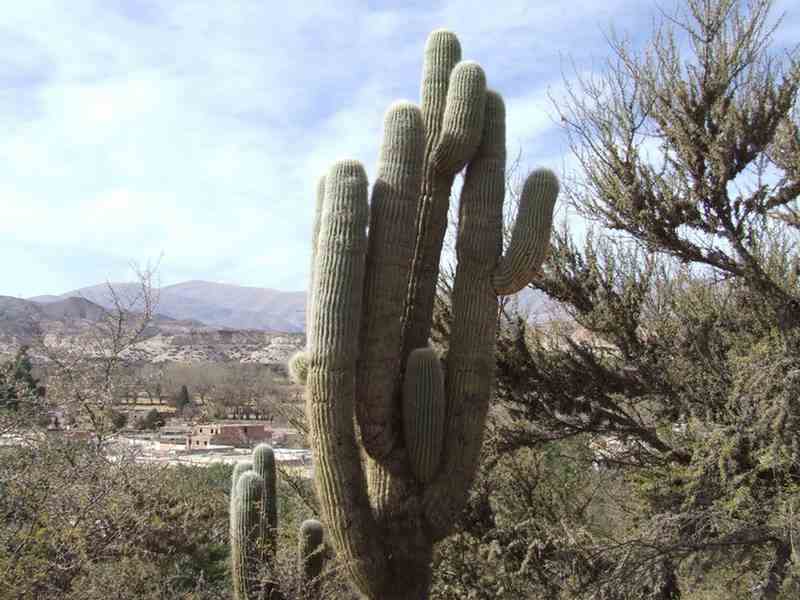
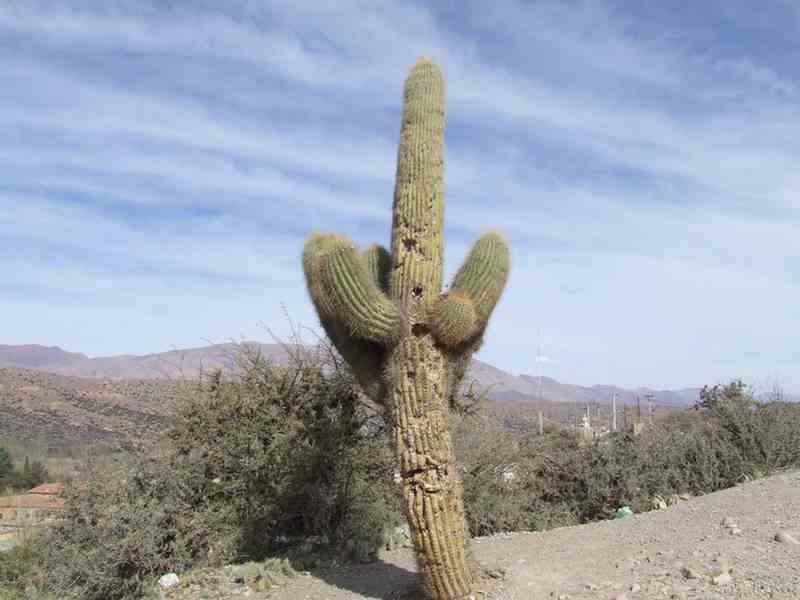


The Artist's Palette near Maimara


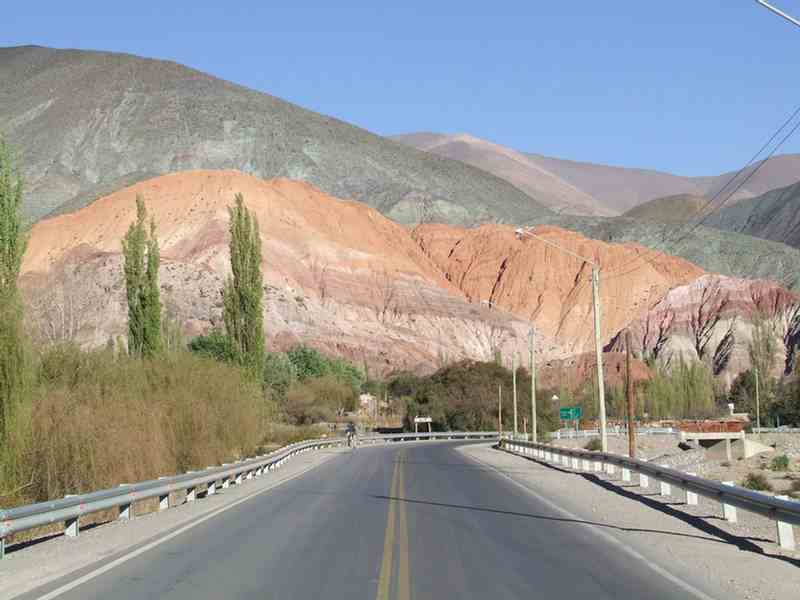
After Maimara we drove further north to Tilcara.
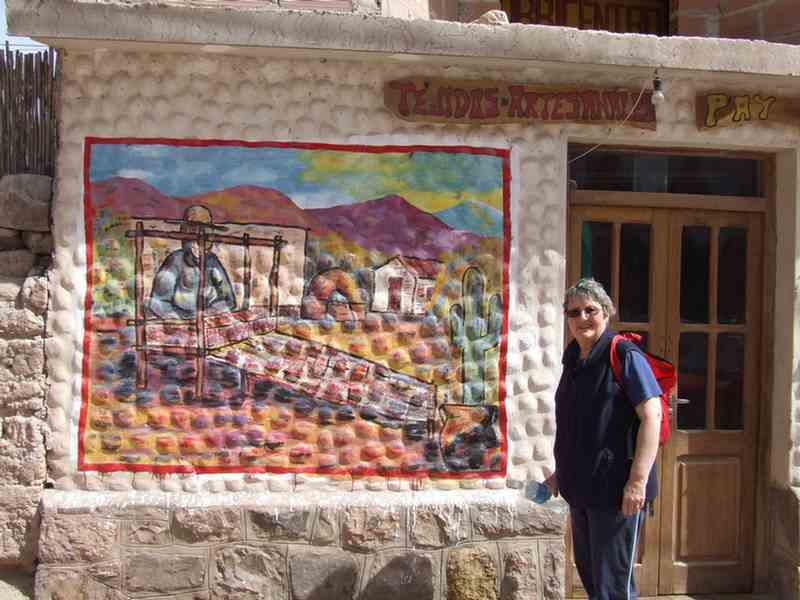
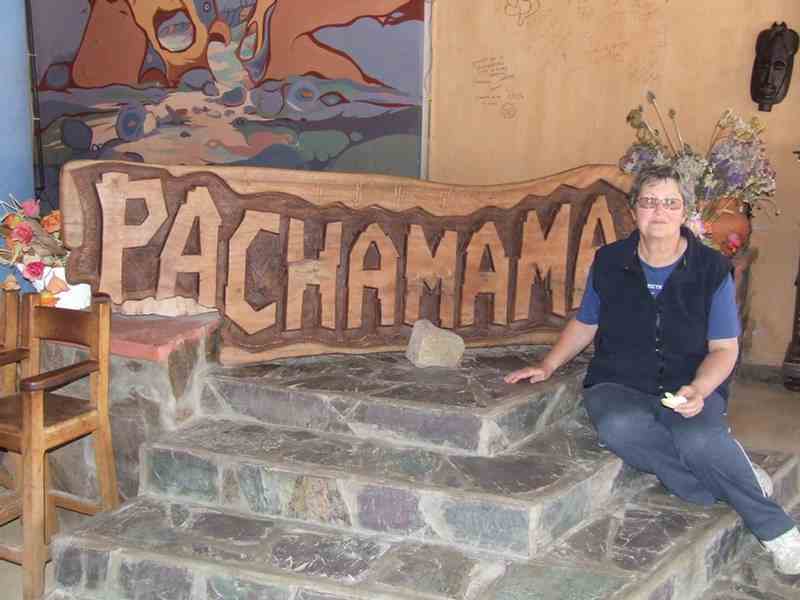


Estancia Fincha Los Los
The four of us stayed overnight at this estancia, 40 km south of Salta.
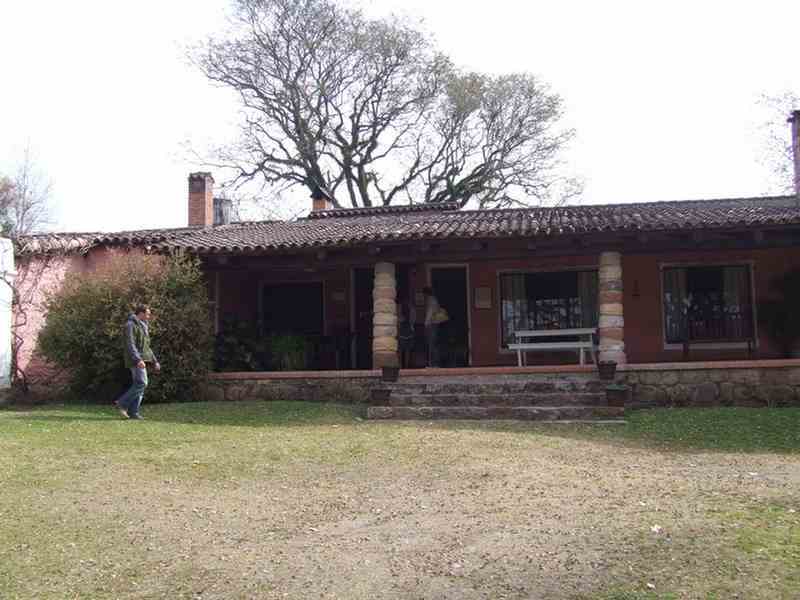

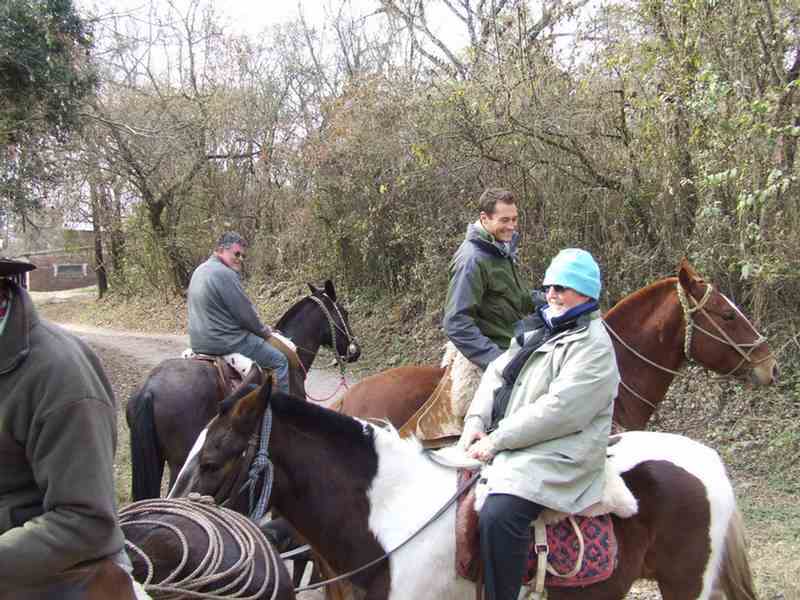

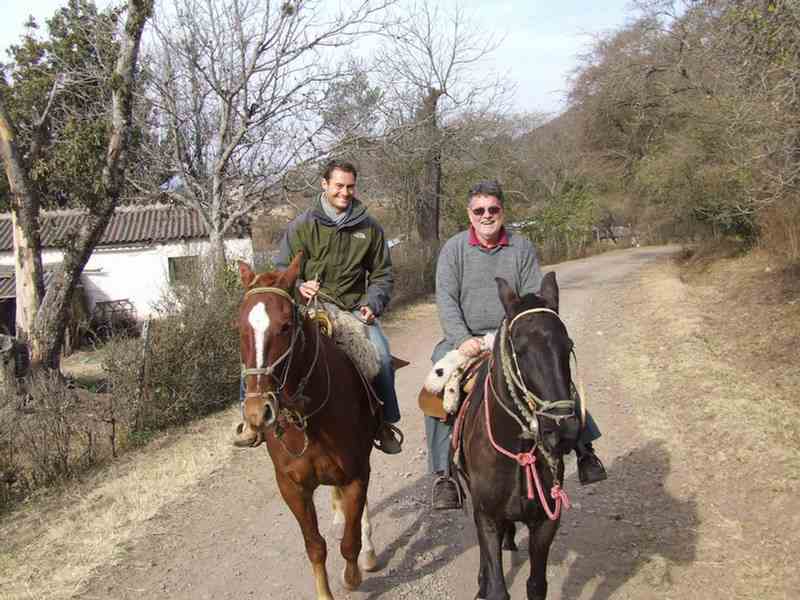


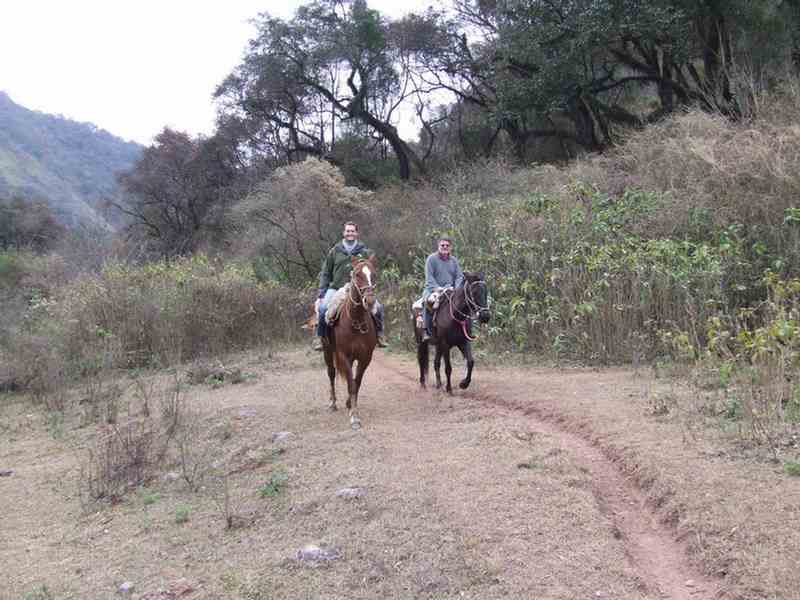
We drove back to Salta.
We rode the cable car to the top of San Bernado Hill (1460m) to look over Salta.
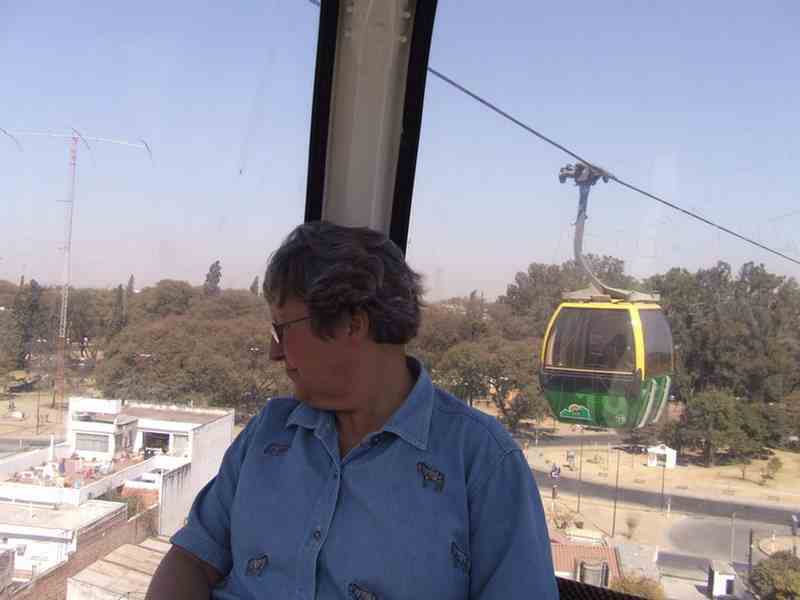
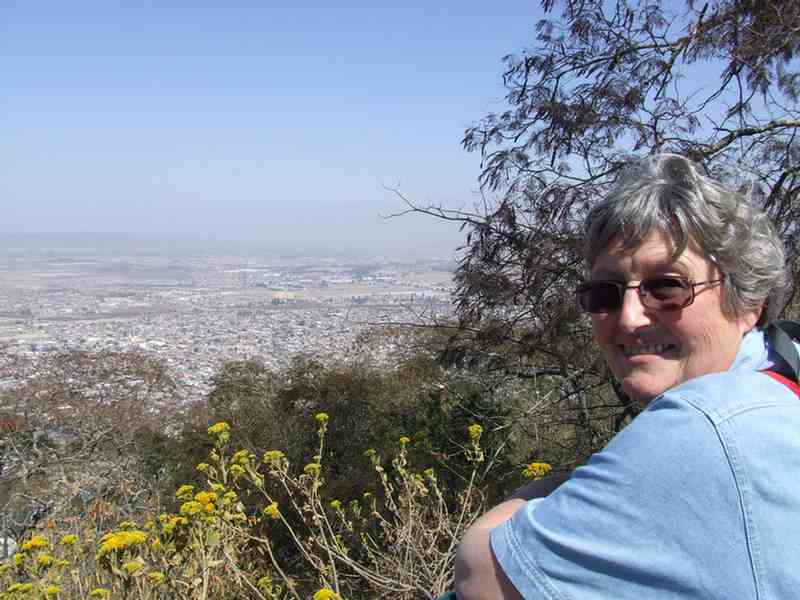
We stayed at a nice place, Hostal Selva Mountain, just outside Salta.
It was my 63rd birthday and we celebrated with a dinner at an old castle.
Surprisingly the chef was an Australian.
Apart from a friend of hers, we were the only other Australians who had eaten there while she had been the chef.

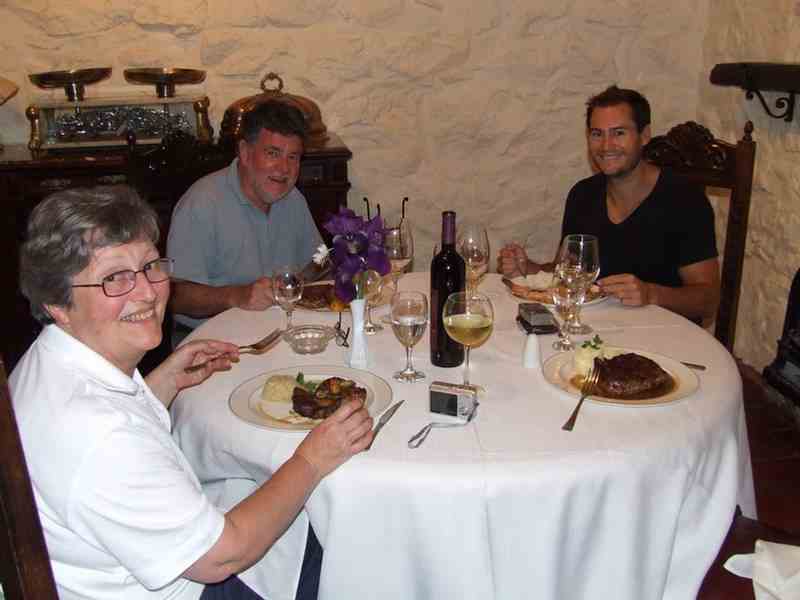
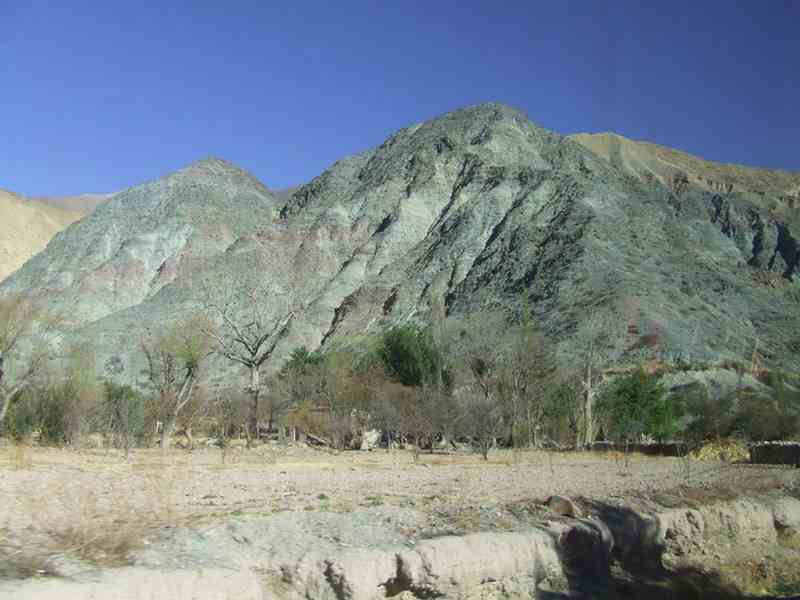
From Salta we had an 8 hour bus trip crossing the Andes from Salta in Argentina to San Pedro de Atacama in Chile.

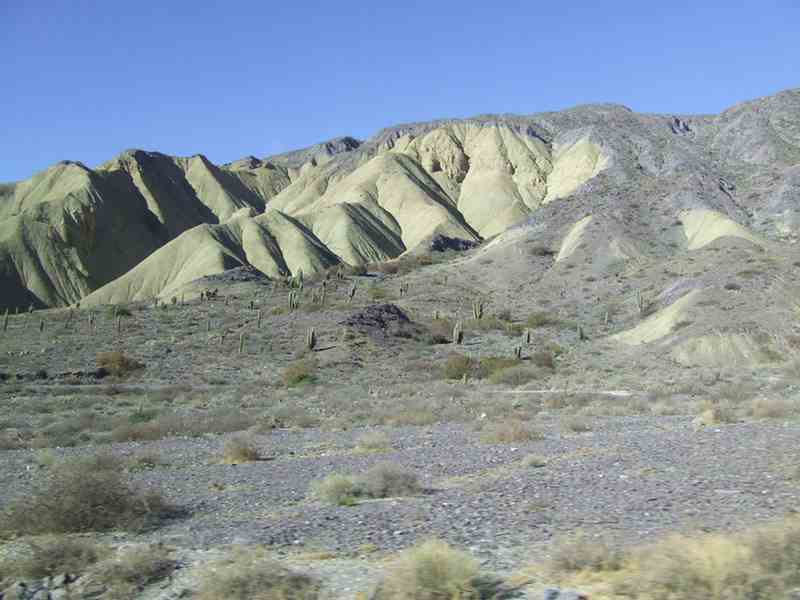



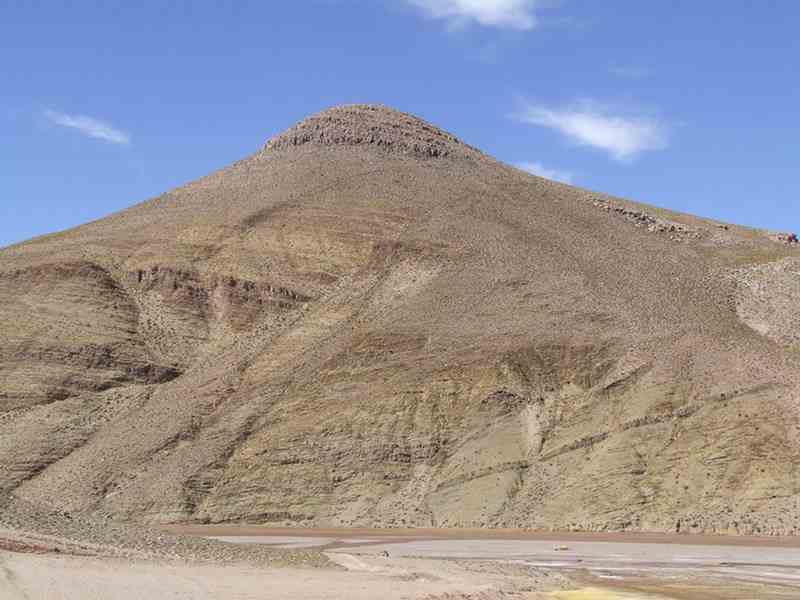
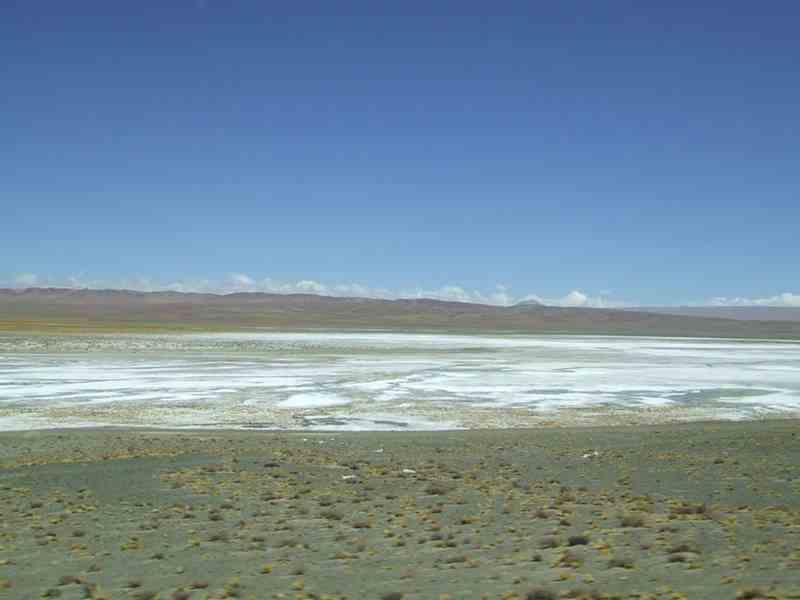

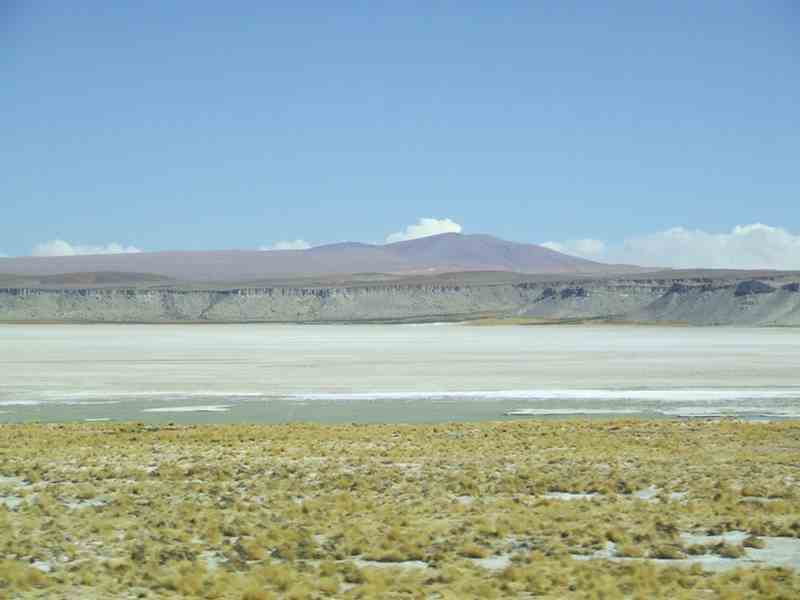
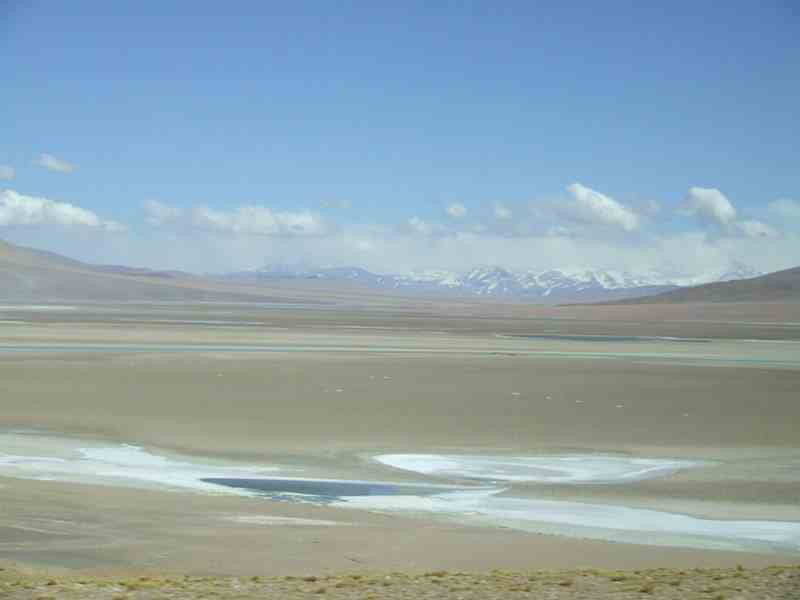
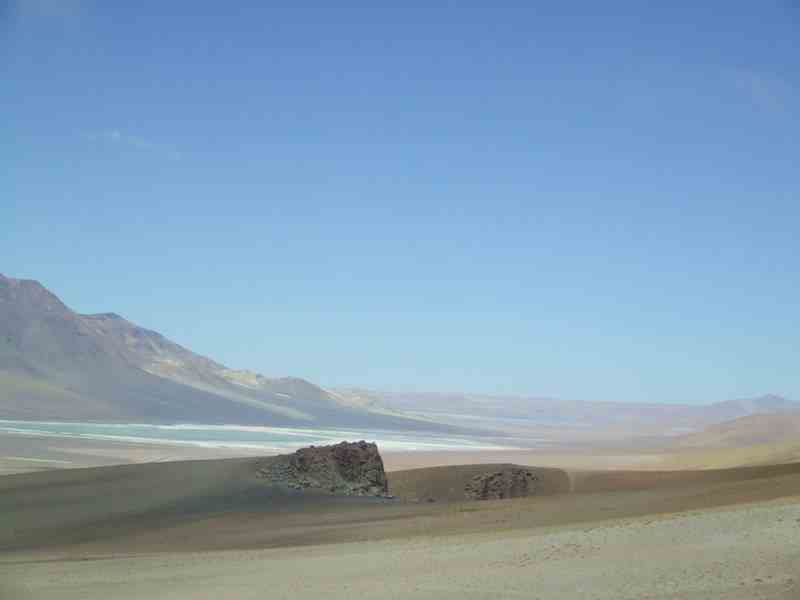
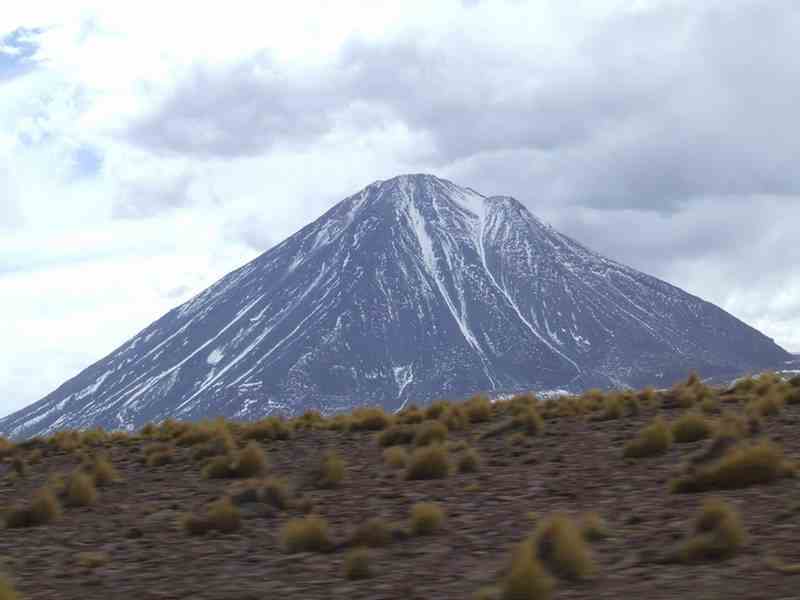

After 2 nights in the Atacama Desert in Chile before we travelled by bus to Calama.
The next day we flew to Santiago to continue our 2007 South American adventures.
In July-August 2007, a fortnight after Drew was born (and after we visited him in Perth), we visited South America for our third time.
(59-days - Melbourne - Auckland - Santiago - Buenos Aires (Argentina) - Iguassu Falls (Argentina and Brazil) - Buenos Aires - Salta -
Atacama Desert (Argentina and Chile) - Santiago - Quito (Ecuador) - Galapagos Islands - Quito - Bogata (Colombia) - Cartagena (Colombia)
- Bogata - Caracas (Venezuela) - Angel Falls (Venezuela) - Caracas - Santiago - Auckland - Melbourne)
After 5 nights in Buenos Aires we flew to Iguassu Falls and crossed into Brazil.
We stayed at the Hotel Tropical Das Cataratas where we met Ben and Crystal.
They had been travelling the world for a long time and they travelled here from northern Brazil.
We travelled with them back into Argentina, staying 2 nights at the Sheraton Hotel in the Iguassu Falls National Park.
After our great time at Iguassu we flew to Buenos Aires for a night.
After that we had a flight to Salta in northern Argentina.
Purmamarca
From Salta we drove 130km north to Purmamarca to see the beautiful colours in the mountains.
The Cerro de los Siete Colores (Hill of the Seven Colours) shows its colourful face to the nearby town.

This scenic sight is composed of 7 different colours, all of which derive from different types of rocks;
leading to its diverse range of colours.
Each colour/rock is also said to have formed during different time periods.
Firstly, pink is believed to be composed of red clay, mudstone (mud) and arilitas (sand).
Its estimated age goes back about 3 to 4 million years.
The shade of white surrounding the pink is mostly made up of limestone and is aged about 400 million years.
Continuing onto the mix of brown and purples, which are composed of lead, and rich in calcium carbonate,
and is 80 to 90 million years of age.
On top of the purple-brown colour, there is an earthy brown colour that has been detected in the rock.
The rocks making up this colour are the most recent colours appearing on the rocks, aging at 1 to 2 million years old,
and is described as "fanglomerate composed of rock with manganese belonging to Quaternary."
As for the red, which is composed of claystones (iron) and other clays belonging to the upper Tertiary,
it is said to also be aged around 3 to 4 million years.
The shades of green, aging at about 600 million years, are made up of phyllites, and slates of copper oxide.
Finally, the yellow mustard colour is made of sandstones with sulfur, and is estimated at 80 to 90 million years.





We drove further north from Purmamarca to Maimara to see the coloured layers of the mountains.










The Artist's Palette near Maimara



After Maimara we drove further north to Tilcara.




Estancia Fincha Los Los
The four of us stayed overnight at this estancia, 40 km south of Salta.








We drove back to Salta.
We rode the cable car to the top of San Bernado Hill (1460m) to look over Salta.


We stayed at a nice place, Hostal Selva Mountain, just outside Salta.
It was my 63rd birthday and we celebrated with a dinner at an old castle.
Surprisingly the chef was an Australian.
Apart from a friend of hers, we were the only other Australians who had eaten there while she had been the chef.



From Salta we had an 8 hour bus trip crossing the Andes from Salta in Argentina to San Pedro de Atacama in Chile.













After 2 nights in the Atacama Desert in Chile before we travelled by bus to Calama.
The next day we flew to Santiago to continue our 2007 South American adventures.